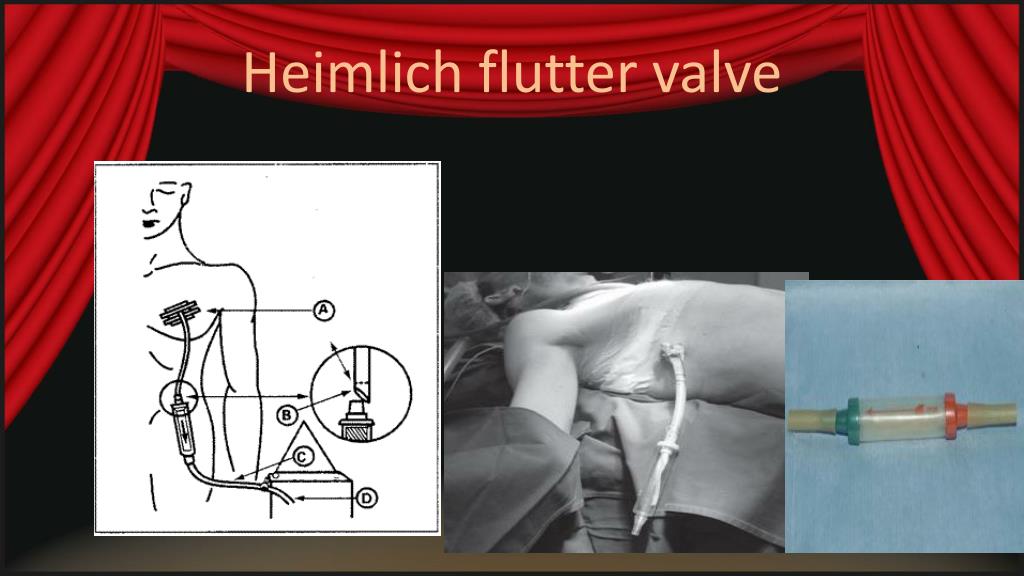

A two-sided P value of 0.05 was considered statistically significant.
Pulmonary flutter valve rar#
The relationship between RAR and length of hospital stay was analyzed using the multivariable linear regression model, with the results expressed as β (95% CI).Īll analyses were performed using R software version 3.6.3. In addition, we performed a sensitivity analysis, excluding deaths occurring within 30 days of enrolment to exclude deaths that could potentially be attributable to a technical complication or an acute deterioration. The interaction between RAR and stratified variables was also investigated further. We also performed subgroup analyses based on age (≤ 84 and > 84 years, median), gender, anemia (hemoglobin men <13g/dL, women <12g/dL), congestive heart failure, renal disease, diabetes, hypertension, and atrial flutter/fibrillation to identify the stability. Moreover, the association between RAR and the primary outcome was outlined using the restricted cubic spline (RCS) regression model. The proportional hazards assumption was validated using the cox.zph function from the R(survival) package. The variance inflation factor (VIF) determined the collinearity of parameters. Model 1: no covariate adjustment Model 2: age, gender, hemoglobin, mean corpuscular hemoglobin concentration (MCHC), blood urea nitrogen, chloride, congestive heart failure, hypertension, atrial flutter/fibrillation, diabetes with complications, and renal disease adjustment. The following principle was used to determine whether to adjust the covariates: when added to the model, the matched HR would change by at least 10%. The results were presented as hazard ratios (HR) with 95% confidence intervals (CI). We estimated the association between RAR and the primary outcome using the univariable and multivariable Cox proportional hazards regression models. For variables with missing values under 5%, the corresponding mean or median was imputed. Baseline characteristics were compared using the one-way ANOVA tests or Kruskal-Wallis H-tests for continuous variables and the chi-square or Fisher’s exact test for categorical variables. Continuous variables were presented as means ± standard deviations (SD) or median and interquartile ranges (IQR) and categorical variables as frequencies and percentages (%). The included patients were divided into three groups according to the tertiles of RAR level. Therefore, this study aimed to explore the association between RAR and all-cause mortality in patients with TAVR and to evaluate whether RAR contributes to risk stratification. However, the relationship between RAR and outcomes in patients undergoing TAVR is uncertain. RAR is a better prognostic marker than either albumin or RDW alone in patients with heart failure, stroke, cancer, aortic aneurysms, diabetic ketoacidosis, and diabetic foot. Linking RDW and nutritional parameters better reflects the geriatric characteristics of these patients. The RDW-to-albumin ratio (RAR), an innovative and comprehensive biomarker, combines systemic inflammation and nutritional status to reflect essential aspects of frailty.

Previous research has found that hypoalbuminemia is a powerful predictor of post-TAVR death. Besides, albumin, a known marker for frailty, was related to malnutrition and chronic inflammation. also reported that a baseline of higher RDW and growing RDW were substantially associated with a higher risk of mortality in TAVR patients. Moreover, RDW was an independent predictor of frailty in older adults with coronary heart disease. Recent research has found a link between red cell distribution width (RDW) and the body’s systemic inflammatory response. Studies have shown that inflammation is linked with the progression of aortic valve disease and frailty. Accurate frailty assessment may reduce mortality and readmissions after TAVR. This can assist clinicians in risk-stratifying TAVR patients and making timely individualized interventions.įrailty is an aging syndrome that frequently occurs in elderly individuals and increases the risk of mortality and disability in the population undergoing TAVR. Therefore, as more patients qualify for TAVR, identifying high-risk patients becomes increasingly essential. Although TAVR benefits many patients in terms of survival and symptoms, some patients have died or been readmitted within one year of the procedure.

With the improvement of operator techniques and medical technology, the indications for transcatheter aortic valve replacement (TAVR) are expanding to patients with moderate and low surgical risk, making it an acceptable alternative to surgical aortic valve replacement.


 0 kommentar(er)
0 kommentar(er)
